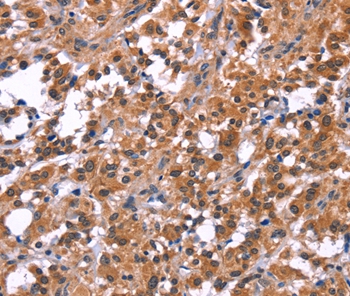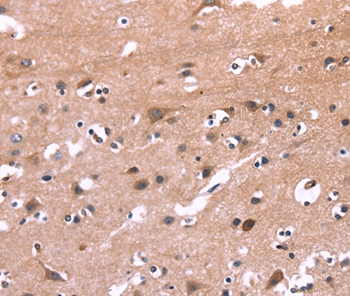Phosphatidylinositol-4-phosphate-5-kinase (PIPK) synthesizes phosphatidylinositol-4,5-bisphosphate, which regulates various processes including cell proliferation, survival, membrane trafficking, and cytoskeletal organization. The PIPK family is divided into type I, type II and type III . Each type of the PIPK family phosphorylate distinct substrates and they contain an activation loop, which determines their enzymatic specificity and subcellular targeting . The phosphatidylinositol-4-phosphate-5-kinase type I consists of three members, PIPK I ?, ¡Ò, and ?, which are characterized by phosphorylating PI4P on the 5-hydroxyl . PIPK I ? (designated PIPK I ¡Ò in mouse) is expressed in brain tissue . PIPK I ¡Ò, designated PIPK I a in mouse, is also called STM7. PIPK I ? has two variants produced by alternative splicing which are expressed in lung, brain, and kidneys.


